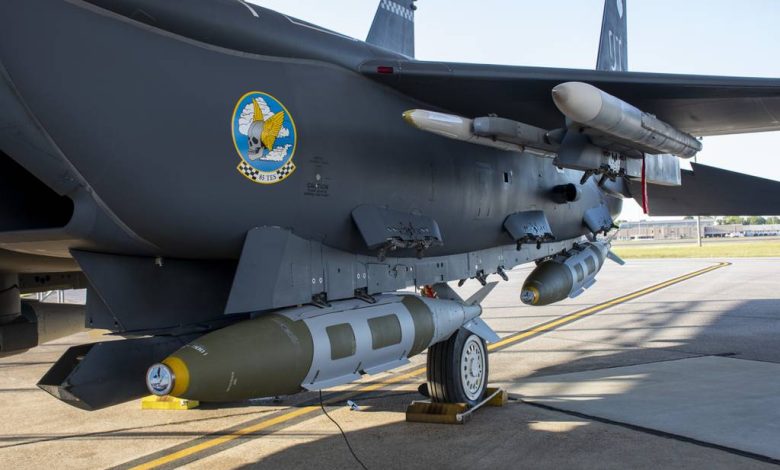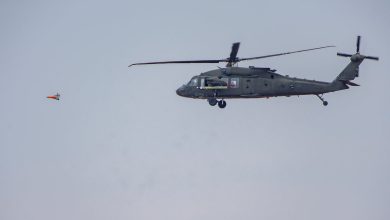Ship-killing guided bomb put to test as Air Force sinks cargo vessel

The Air Force in July tested a new ship-killing guided bomb to demonstrate the service’s growing ability to sink enemy vessels.
A B-2 Spirit bomber released the weapon, which the Air Force Research Laboratory calls QUICKSINK, against an empty cargo vessel in the Gulf of Mexico, AFRL said in a Thursday release.
Col. Matthew Caspers, head of AFRL’s munitions directorate at Eglin Air Force Base in Florida, said in a statement that the technology will ensure the U.S. can defend its interests, keep seas open, and “seize the initiative over large maritime areas.”
“QUICKSINK is an answer to an urgent need to neutralize maritime threats to freedom around the world,” Caspers said.
The Air Force is developing QUICKSINK to bolster its anti-ship capabilities, which would be crucial in a potential conflict with China or another major adversary. Defense leaders have repeatedly said the U.S. military’s top challenge is China, which views the island nation of Taiwan as a breakaway province with which it must reunify, possibly through a swift invasion.
A war against China would likely involve fierce naval battles across the Pacific, and the Air Force hopes QUICKSINK would provide another weapon in its arsenal to counter the Chinese navy.
The QUICKSINK program will allow the Air Force to modify current or future weapons to hit targets at sea that are either stationary or moving. AFRL said in 2021, as it began testing the concept, that it wants the weapons to home in on specific points on the target vessel, including at its top, at the waterline or just below the water’s surface.
AFRL did not specify which weapon was used in July’s test to sink the cargo vessel, called the Monarch Countess. A previous test in 2022 used a modified GPS-guided GBU-31 Joint Direct Attack Munitions, or JDAM, to strike a target vessel.
The JDAM does not operate under its own power, and uses fins to steer towards its target while the speed of the releasing aircraft and gravity provide the weapon’s velocity.
AFRL said in a 2021 interview with Military.com that the JDAM’s nose plug had been redesigned as part of this effort. That was done to ensure the JDAM does not careen off in an unexpected direction if it hits the water before striking its target, which an AFRL official compared to a stone skipping across a pond’s surface.
While the Air Force hopes QUICKSINK would have a similar ship-killing effect as a traditional torpedo, this weapon would not travel under the water’s surface to the target. Air Force officials say QUICKSINK would be cheaper and more flexible than heavy-weight torpedoes, and could be released from most of the service’s combat aircraft.
A B-2 bomber carried out July’s test, and an F-15E Strike Eagle released a GBU-31 JDAM that had been modified into a maritime QUICKSINK weapon in a previous test in 2022.
AFRL’s munitions directorate is working with the Navy on a Maritime Weapon Program to develop air-launched weapons that can sink enemy ships.
The July test in the Gulf of Mexico was separate from the Navy’s live-fire sinking exercises during the Rim of the Pacific, or RIMPAC, drills that same month, AFRL said.
The RIMPAC exercises included sinking two decommissioned ships — the amphibious transport dock Dubuque and the amphibious assault ship Tarawa — off the coast of Hawaii. Those ships were struck by aircraft and ships from the U.S., Australia, Malaysia, the Netherlands and South Korea, using weapons that included the Long-Range Anti-Ship Missile and the RGM-84 Harpoon missile.
Stephen Losey is the air warfare reporter for Defense News. He previously covered leadership and personnel issues at Air Force Times, and the Pentagon, special operations and air warfare at Military.com. He has traveled to the Middle East to cover U.S. Air Force operations.







